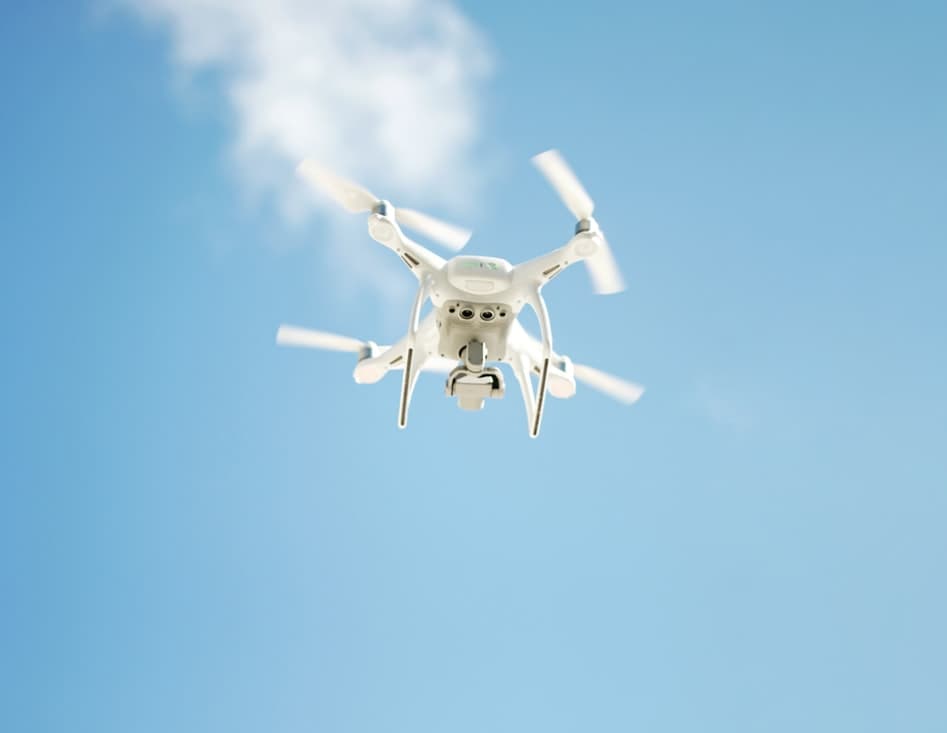
80 percent of UK citizens would support more widespread adoption of drones if there was a mechanism to provide increased safety, security and monitoring.
These are the findings from The Cellular-connected Drones report, written by WPI Economics for Vodafone, which calls for commercial and public sector drones to be fitted with SIM cards to give them cellular network connectivity. This would mean drones could be flown beyond the “visual line of sight” of their operators, which is stipulated by current rules.
Drones have significant positive use cases for hard-to-reach areas, such as delivering time-critical medical supplies, inspecting infrastructure, responding to emergency situations and disabling mines, amongst others. However, they are feared by the public.
Yoti Business Executive Derek has an alternative solution. Below he makes the case for identity-linked drones, originally posted earlier this month on TechUK.
*****
The benefits of drones
The identifiable use cases for drones continue to expand with technology advancements, maturity, and accessibility. Drones can de-risk manual tasks, such as working at height, save time within operational processes and drive cost efficiencies, all whilst contributing to a reduced carbon footprint. So, when there is such potential benefit to the public why are we experiencing growing resistance?
The identifiable use cases for drones continue to expand with technology advancements, maturity, and accessibility. Drones can de-risk manual tasks, such as working at height, save time within operational processes and drive cost efficiencies, all whilst contributing to a reduced carbon footprint.
So, when there is such potential benefit to the public why are we experiencing growing resistance?
Why are people resistant to drones?
We’ve all heard stories, or experienced ourselves, the unsettling feeling of a drone flying overhead whilst you have no idea of its purpose or intention. Contributing to this feeling are headlines of international airports being severely disrupted due to rogue drones, such as the 2018 Gatwick case that affected around 1,000 flights. The Gatwick incident was particularly concerning for the public as two drone enthusiasts were incorrectly arrested (eventually released) and the search closed without identifying and arresting the pilot responsible.
Post this event, two-thirds of the public said they trust drones less – and understandably so.
How do we win over the public?
Winning over public sentiment is essential to the rise and acceptance of drones. Educating the public is starting to be addressed, however with their justified concerns around privacy and accountability, education alone is not enough. Instead, proper regulation and real accountability must be enforced. Regulators like the US Federal Aviation Authority (FAA) and the UK Civil Aviation Authority (CAA) have made a start. They are proposing flight rules, zoning regulations, drone registration and essentially a visible license plate on each drone. A step in the right direction, but the thought of people bringing out binoculars to catch a moving drone’s license plate makes me laugh. The private sector has been working on this themselves. DJI, for example, released AeroScope a few years ago to help identify drone types and flight status – but still didn’t manage to come up with a way to accurately identify the pilot. Without real-time pilot identification, public trust won’t be achieved.
The technology to make this possible is available today. With a pilot’s identity linked to signal emitting from the drone, in a similar manner to an aircraft transponder, authorities can be assured as to who is in control.
How would a digital identity be linked to a drone?
There are a range of digital identity wallets (phone applications) available that enable individuals to create a verified and reuseable digital version of their government-issued ID. The digital ID allows for the consumption of verified attributes from third parties, such as the consumption of a flyer ID on passing an online test.
Prior to flight, an individual will use their identity wallet to, in essence, ‘log into’ the drone and pass the associated flier ID, linked to their unique biometrics.
The benefits of identity-linked drones
Remote ID
With identity-linked drones and remote ID tools, the authorities will see a continuous readout of drone flyer ID’s, in the same way as ATC read squawks today. The flyer ID remains anonymous until such time that a drone breaches regulations, is integrated and linked back to a specific individual for further action.
Insurance
There is a growing market for drone insurance, such as Flock. Insurance may cover the pilot flying but questions remain around whether the insured pilot is really the one in control – not just your friend taking it for a spin. If insurance companies could confidently say the correct person is controlling the drone, then premiums could come down, making drone insurance more affordable.
How to make this a reality?
This will require cooperation between regulators, drone manufacturers, technology innovators, and governments alike. Linking real pilot identities to drones is essential to a valuable remote ID system. Bundle this together with appropriate flight zoning regulations, I am confident that public acceptance of drones will rise and finally allow everyone to reap the benefits drones bring.
